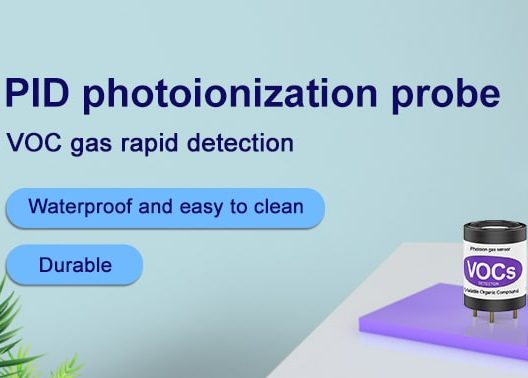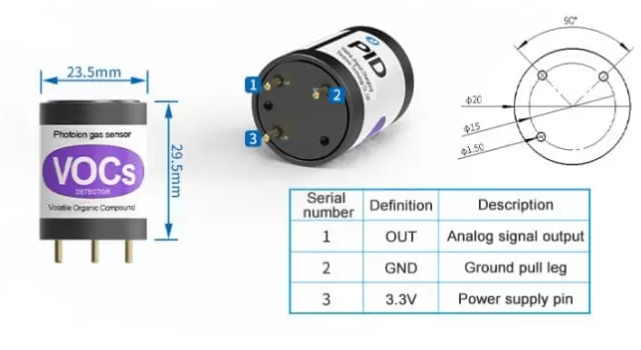Gas detection is a critical aspect of ensuring safety, including manufacturing fuel and environmental monitoring. PID sensors is one of the key components of gas detection system. It plays an important role in accurately and reliably detecting the presence of harmful gases. In this article, we will explore the importance of PID sensors, how they work, and their applications in various industries.
What is a PID Sensor?

PID sensors stands for Photoionization Detector, which is a type of sensor used to detect the presence of volatile organic compounds (VOCs) and other hazardous gases. Unlike traditional gas detection methods, which rely on the detection of specific gases through chemical reactions, PID sensors work by ionizing gas molecules using ultraviolet light. When a gas molecule is ionized, it releases electrons, which are then measured by the sensor to determine the concentration of the gas in the air.
How Does a PID Sensor Work?

PID sensors consist of a lamp that emits ultraviolet light, a sample chamber where the gas is introduced, and a detector that measures the ionized gas molecules. When the gas molecules are exposed to the ultraviolet light, they become ionized, and the resulting electrons are collected by the detector. The amount of current produced by the ionized gas molecules is directly proportional to the concentration of the gas in the air, allowing the sensor to provide accurate and real-time measurements.
The Benefits of PID Sensor
PID sensors offer several advantages over traditional gas detection methods, making them a popular choice for a wide range of applications. Some of the key benefits of PID sensors include:
Wide Detection Range: PID sensors are capable of detecting a wide range of VOCs and other hazardous gases, making them versatile and suitable for various industrial applications.
Real-Time Monitoring: PID sensors provide real-time measurements of gas concentrations, allowing for immediate response in the event of a gas leak or other hazardous situation.
High Sensitivity: PID sensors are highly sensitive and can detect even trace amounts of VOCs and other gases, making them ideal for monitoring air quality and ensuring workplace safety.
Low Maintenance: PID sensors require minimal maintenance and calibration, reducing downtime and ensuring continuous and reliable gas detection.
Applications of PID Sensor
People use PID sensors in various industries, accurate and reliable gas detection is very important to ensure safety. Some common applications of PID sensor include:
Industrial Safety: PID sensor are monitor the presence of hazardous gases in industrial settings, such as manufacturing plants, chemical processing facilities, and refineries.
Environmental Monitoring: PID sensor are monitor air quality and detect the presence of VOCs and other pollutants in the environment, helping to protect public health and the environment.
Oil and Gas: PID sensor are in the oil and gas industry to monitor for the presence of hydrocarbons and other volatile organic compounds during drilling, production, and refining processes.
Indoor Air Quality: PID sensor are monitor indoor air quality in commercial and residential buildings, helping to ensure a healthy and safe environment for occupants.
conclusion
In conclusion, PID sensor play a critical role in gas detection systems, providing accurate and reliable measurements of volatile organic compounds and other hazardous gases. With their wide detection range, high sensitivity, and real-time monitoring capabilities, PID sensor are essential for ensuring safety in a wide range of industries and applications. As technology continues to advance, PID sensor will undoubtedly continue to play a key role in gas detection and environmental monitoring, helping to protect workers and the public from the dangers of hazardous gases.